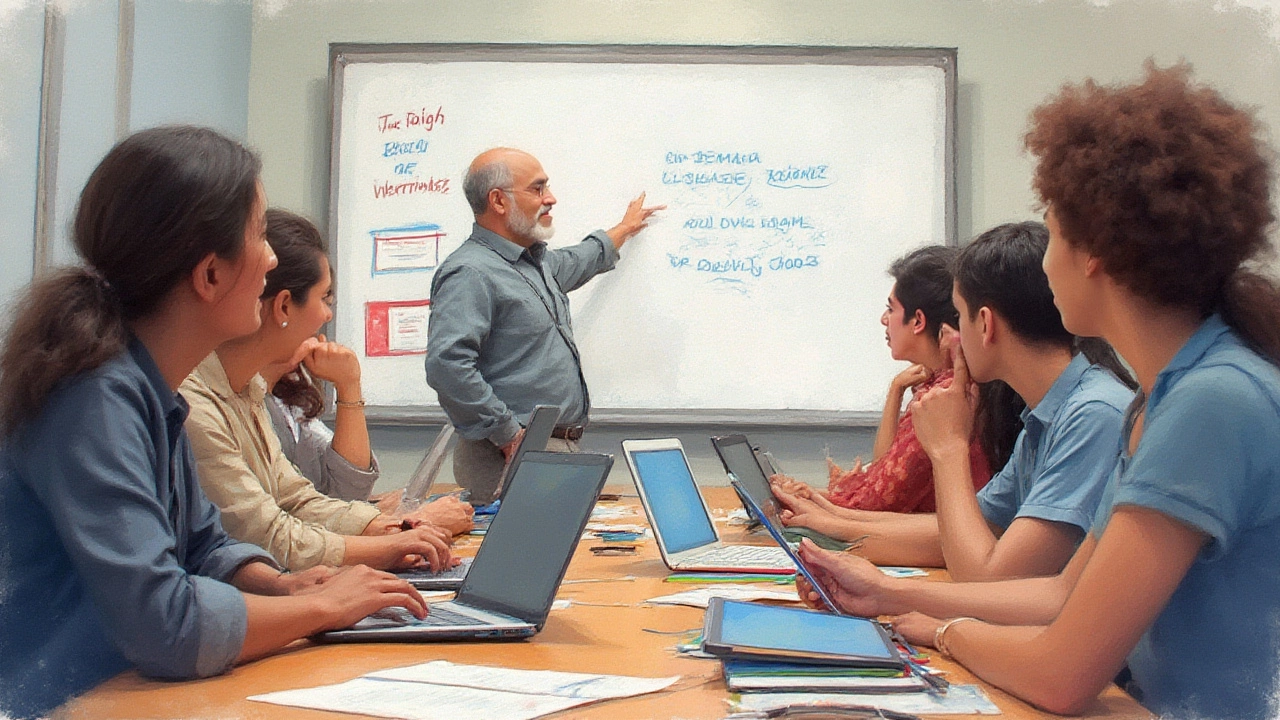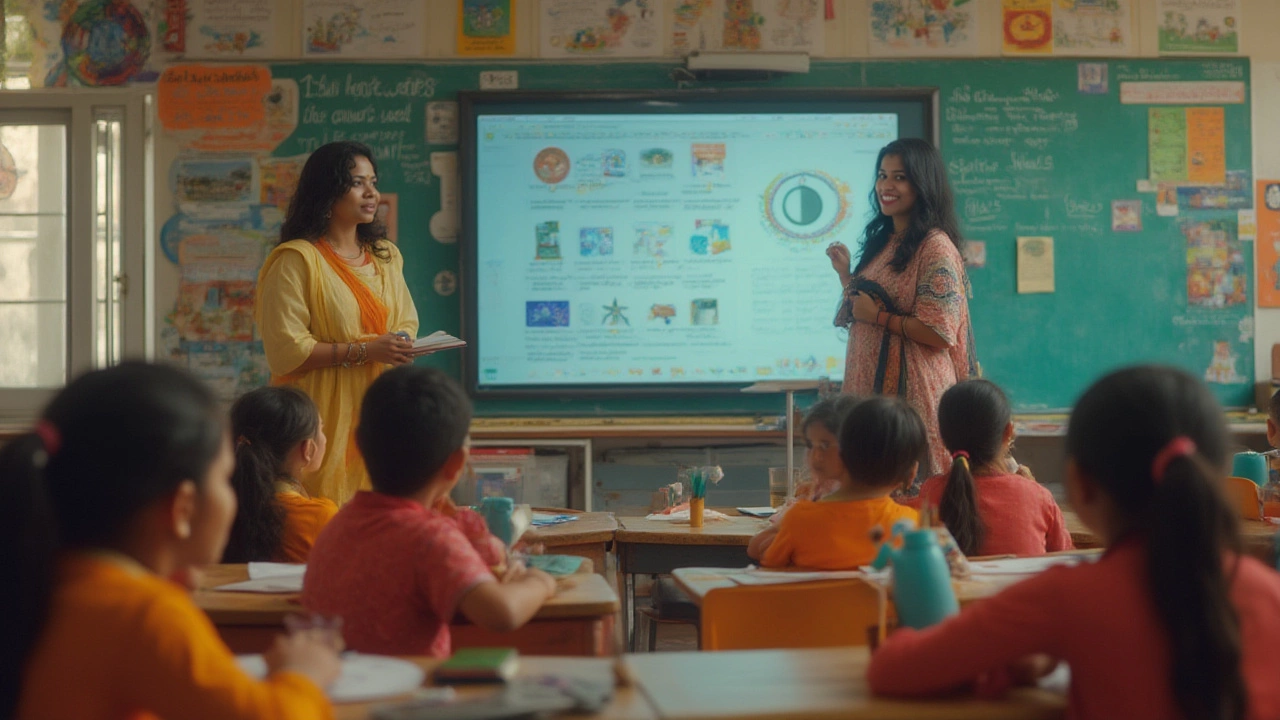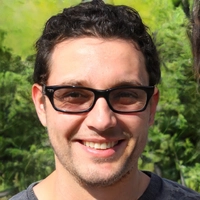You’d expect the teacher shortage stories to be old news by now, but they’re only getting louder. Principal inboxes don't lie—every week, desperate calls come through for maths, science, and tech teachers who can actually make lessons stick. It’s not just a city or country thing; schools from Sydney to Seattle are fishing in the same shrinking pond. Australian government data in 2025 showed secondary schools across Melbourne and regional Victoria reporting nearly double the vacancy rates compared to five years ago. Yet, there are jobs begging for certain kinds of teachers while others barely get an interview. And when budgets tighten, it’s the specialised skill set that keeps you ahead.
Why Certain Teaching Roles Are Always in Short Supply
Let’s get one thing straight: teacher shortages aren’t about not having enough people with a teaching degree. The real issue? Not enough people want (or are able) to teach certain subjects, in certain places, or under certain conditions. Math and science have been the classic eternal gap—Australian Bureau of Statistics data shows they’re still top of the “hard to fill” lists, especially in rural and outer-suburban schools. The situation’s even more extreme in areas like coding, digital technology, and special education. High schools in Melbourne’s west in 2025 reported up to 50% of maths and tech teaching positions vacant at the start of the year.
It’s not just about the subjects, either; it’s whether those teachers can inspire kids, adapt to rapid curriculum changes, and handle the pressure of remote and hybrid classrooms. English as an Additional Language (EAL) and special needs teachers are constantly hunted, partly because of the steady increase in students from diverse backgrounds. By July 2025, more than 24% of Australian school students spoke a language other than English at home. That’s a massive spike compared to previous decades, pouring more demand onto this branch.
In remote or Indigenous communities, the supply-demand gap is a canyon. Governments offer cash lures or bonuses to get qualified teachers out to Alice Springs or East Gippsland, but the jobs often go unfilled or are staffed by temporary relief teachers. If you think this demand is only for young rookies, guess again. Mid-career changers with niche knowledge—like software engineers retrained as coding teachers—are snapped up instantly by both government and non-government schools.
STEM teachers are considered the holy grail today, not just because of tech booms, but because maths and science underpin nearly every growth industry, from green energy to bioengineering. It’s the kind of role you could walk into with your pick of offers. The secret sauce? Dual-qualification. Data from Monash University’s 2024 ‘State of Teaching’ survey showed that applicants with both a science/math background and a second language or special needs support qualification were three times more likely to land interviews compared to those with a single specialisation.
Subjects and Skills Leading the Teacher Demand Race
Walking into any job site or university campus in Australia, and you’ll hear the same talk: STEM is king. Shortages of science, technology, engineering, and mathematics teachers have driven up salaries and bonuses in both metro and regional areas. Education departments have responded with new scholarships for STEM teaching students, fast-track certification options, and even loan forgiveness for those who stick around beyond a few years. Just look at New South Wales, where STEM teachers in 2025 can get $10,000 relocation bonuses and a guaranteed permanent contract after one year.
But it’s not just dry algebra or physics that gets all the love. With coding now required from primary school level, tech-savvy teachers with experience in Python, JavaScript, or robotics are in hot demand. The private sector’s always circling, snapping up the best coding teachers for bootcamps or private tuition, so schools have to get competitive. Some public schools now offer salary loadings or even allow part-time arrangements to keep these teachers from bolting to industry jobs. These roles are often hybrid; you may end up coaching staff on the latest educational software in addition to regular classes.
Special Education needs deserve their own spotlight. Kids with autism, ADHD, dyslexia, or complex physical disabilities are better diagnosed and supported than ever, but there’s a chronic shortage of trained specialists. In Melbourne, there are now two vacancies for every qualified special educator. The Australian Education Union reported in April 2025 that over 70% of principals surveyed struggled to fill these roles the previous year. It’s a career that demands patience, creativity, and serious adaptability.
Language teachers, particularly those for Chinese, Japanese, and increasingly Spanish, are also pulling ahead. With Mandarin now the most-taught second language in Victorian primary schools, bilingual educators are hot property. And here’s a tip: if you can team that language skill with digital fluency or social-emotional learning (SEL) experience, you’re looking at a career jackpot.
EdTech skills round out the hottest list. The pandemic kicked lesson planning online, and even now—hybrid classes and digital portfolios are here to stay. Teachers who keep up with new learning platforms, adaptive learning apps, and can run a video class without tech fails bring instant value. Plenty of Melbourne schools now list ‘EdTech proficiency’ alongside formal teaching credentials as a must-have.
| Subject Area | Vacancy % (2025, VIC) | Average Starting Salary (AUD) |
|---|---|---|
| Maths | 42% | 74,000 |
| Science | 39% | 73,500 |
| Technology/Coding | 51% | 80,000 |
| Special Education | 53% | 79,000 |
| Languages | 31% | 72,000 |

What Makes a Teacher Stand Out in the Job Market
You’re probably wondering if simply having knowledge in a high-demand subject is enough. Nope—it’s only the ticket in. The teachers who are first picked from the pile are those who can prove something more. They show stacks of real classroom innovation: think hands-on project work, flipped-classroom experience, or the ability to lead STEM clubs or language camps. Principals love teachers who act as tech mentors for other staff or who can run parent workshops about online safety.
The other deal-breaker is flexibility. If you’re willing to commute, work rural gigs with housing support, or cover for multiple subjects, you’ll find yourself with heavy bargaining power. Recent job listings in Victorian government schools give extra points for those ready to take on leadership tasks like developing e-learning resources or leading professional development sessions. And don’t ignore soft skills—schools crave calm, resilient teachers who can build trust and motivate students who are struggling, either academically or emotionally.
Another way to boost your visibility is credits or certifications outside the traditional Bachelor of Education. Teachers now chase micro-credentials—like Google Certified Educator or Project-Based Learning (PBL) certificates—that show you’re not just winging it with lesson plans. Some even add business or design modules to their skillset, especially those planning to teach vocational pathways like entrepreneurship or digital media. And if you can demonstrate that you’ve used data analytics to improve student outcomes or engagement, you’re basically gold-dust—schools want teachers who deliver measurable results and can explain how they did it.
Student and parent connection is becoming a currency of its own. Personalised updates, quick feedback via text or digital journals, and running after-school clubs all help you stand out. No one is hiring lone wolves anymore. The tightest-knit schools value teachers who collaborate, swap resources, or jump on school-wide improvement projects without waiting to be asked.
Tips for Aspiring Teachers and Career Changers
If you’re eyeing a teaching career in 2025, don’t just sign up for any degree. Here’s what really gets you hired: choose a double major in something high-demand (say, maths and digital technology), get some SES or rural school placement under your belt, and take every tech course you can manage, whether it’s VR apps or online assessment tools. Universities in Melbourne now partner with local tech firms to run teaching practicums embedded with real-world coding and robotics sessions.
Mid-career switchers have serious leverage if they make their industry experience visible. If you’ve worked in IT, engineering, finance, or healthcare, show school leaders how your practical knowledge translates into killer classroom projects. Push for recognition of prior learning to speed up your certification. And use industry connections to bring fresh resources into schools, from guest speakers to virtual tours.
Networking is no joke. Join teaching associations, LinkedIn groups, and attend conferences (even virtual ones). Sometimes, a quick DM to the right principal or university placement coordinator lands you that vital first gig. Stay market-aware—the high-demand list changes fast. If a new curriculum launches in computational thinking or sustainability, jump in early. Schools want initiative, not just box-tickers.
One of the smartest moves? Pick up extra skills in student wellbeing, conflict management, or inclusivity training. These aren’t fluffy extras; they’re becoming must-haves as mental health and resilience dominate school priorities post-pandemic. And don’t ignore your own wellbeing. Burnout rates for new teachers are still high, but those who build networks, seek mentorship, and carve out boundaries are the ones who last and thrive.
Australia’s teacher shortage is like climate change—everyone’s aware, but the solutions need real, specialised action. If you target the right skills and remain adaptive, there’s no shortage of opportunity. The market pays more and rewards you faster when you’re ready to take on the urgent roles that tomorrow’s learners need most.

